
For the Ku Klux Klan, the early 1920s were the golden age since many influential and successful people were either sympathetic to the cause or straight-forward Klansmen.
The group claimed to have three million members across the country, including eminent leaders from coast to coast.
The silent film Birth of a Nation, which presented members as heroes and aligned with the general xenophobia following the destruction of World War I, released in 1915 fueled the expansion.
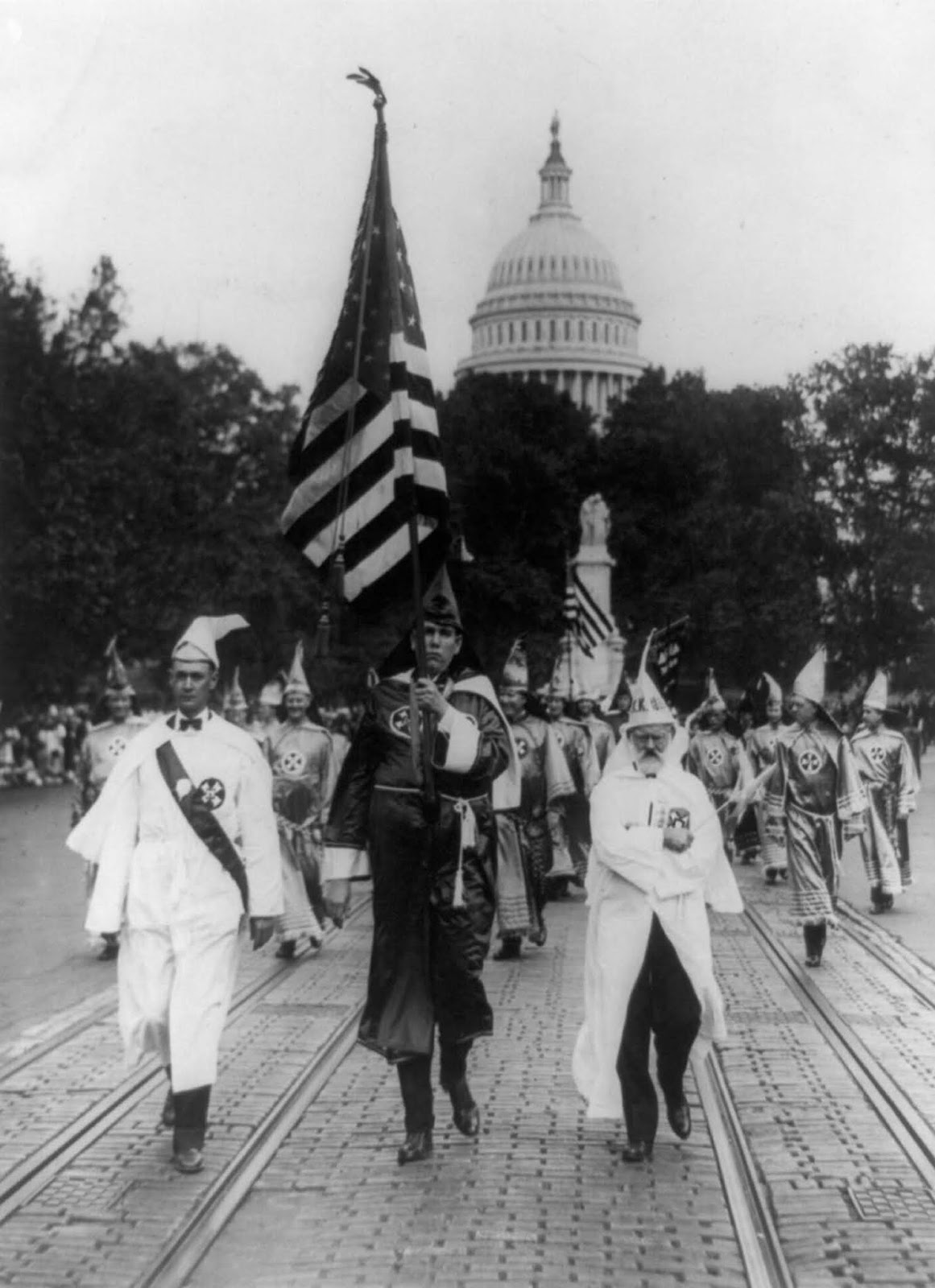
Klan membership was not something many members decided to keep hidden during this time.
Historian Ibram X. Kendi has observed that “you had many members of the Klan who were politicians – senators, congressmen, statehouse representatives and that only encouraged members to appear publicly without their hoods.” At least partially, this can be explained by the Klan’s marketing strategy.
Associated with violent attacks on African Americans, the first incarnation of the Klan had emerged following the Civil War.
It had disintegrated by the 1870s, having drawn criticism during Reconstruction. Emphasizing a nativist, American-first agenda, the Klan sought to highlight a second coming of sorts in the 1910s and 1920s.

Col. William Simmons advertised “The World’s Greatest Secret, Social, Patriotic, Fraternal, Beneficial Order” and a “High Class Order for Men of Intelligence and Character” when he declared the Knights of the Ku Klux Klan’s comeback in 1915.
Many white Protestants in a time of mass African American migration from the South to the North and an inflow of Jewish and Catholic immigrants from Europe connected with this kind of fellowship in addition to the nativist message.
For two large marches in 1925 and 1926 the Klan descended on Washington, D.C. For the occasion, thousands of people came to take part and many more to observe from the national capital.

As The Sun observed, ” practically every state East of the Mississippi was represented” as the roads leading to D.C. became a procession of cars adorned with ostentatious Klan signs and insignia.
Though organizers had hedged their predictions and provided conservative projections, it seemed probable the Klan would be rather visible in the weeks preceding the event.
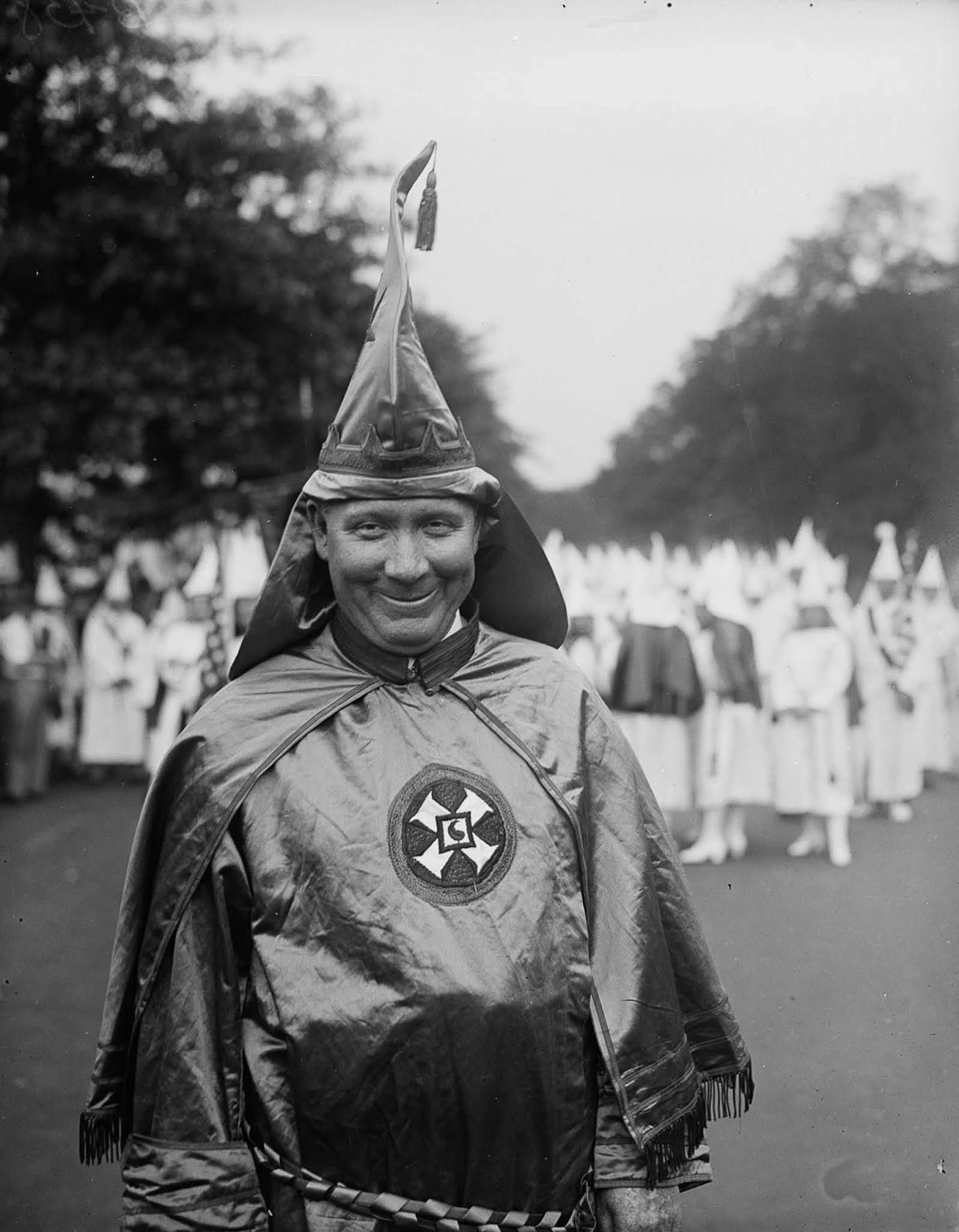
That changed the day before they started marching though.
The New York Herald reported that “Leaders of the Klan, abandoning the reserve and conservatism which had characterized their predictions regarding the demonstration, admitted tonight they expected at least 50,000 visitors and that the number might greatly exceed that.”
They also withdrew recent announcements stating just 5,000 would march in the procession, claiming 20,000 or 30,000 could take part.
The parade included an estimated 30,000 participants and 150,000 viewers by the time the event started in the sweltering 3pm heat.
The event was described in the New York Herald: “30,000 men and women paraded down Pennsylvania Avenue today from the capitol to the treasury wearing the white robes and conical hoods of the Ku Klux Klan. The vibrant procession passed over about three and a half hours.
The Chicago Daily Tribune reported mostly ‘large portions in which state and county delegations of the order trooped along in the plain robe and hoods’, but also ‘Kleagle’s, dragons and other dignitaries of the organization in green silken robes and hoods, flaming red, bright, yellow and red, white and blue and companies of Klan’s guards in snappy uniforms, white caps, black Sam Browne belts and black puttees’.

While several newspapers highlighted the march’s accuracy, The Washington Post commented, “There were few drilled marchers in the procession.” Sometimes their lines, which ran the whole Avenue, swung wildly back and forth.
The Washington Post referred to the incident as “one of the strangest scenes of their lives.” The story went on, “In vehicles and afoot they crept gingerly from the main highway into a dark neck-like path opening into the blackness of the grounds. Here ghost-like entities moved in shadow against the dark backdrop.
Sometimes the white-robed hosts were clearly visible under flashlights and car headlights.
A lone electric light playing on their multi-colored uniforms sits L.A. Mueller, Grand Kleagle for the District Klan, and other officers of the order in the wooden stand where notable horsemen are likely to judge thoroughbred horses.
The silent figures of the Invisible Empire formed a broad circle around a little electrically lit cross before the stand.

Though it was hard to know at the time, the 1926 procession most likely signalled the height of Klan appeal.
Though the group made every effort to attract fresh members, next years did not match the “greatest un-masked demonstration ever staged by the secret order”.
Membership in the Invisible Empire had slumped significantly by the end of the decade, then surged once again during the 1960s Civil Rights Movement.



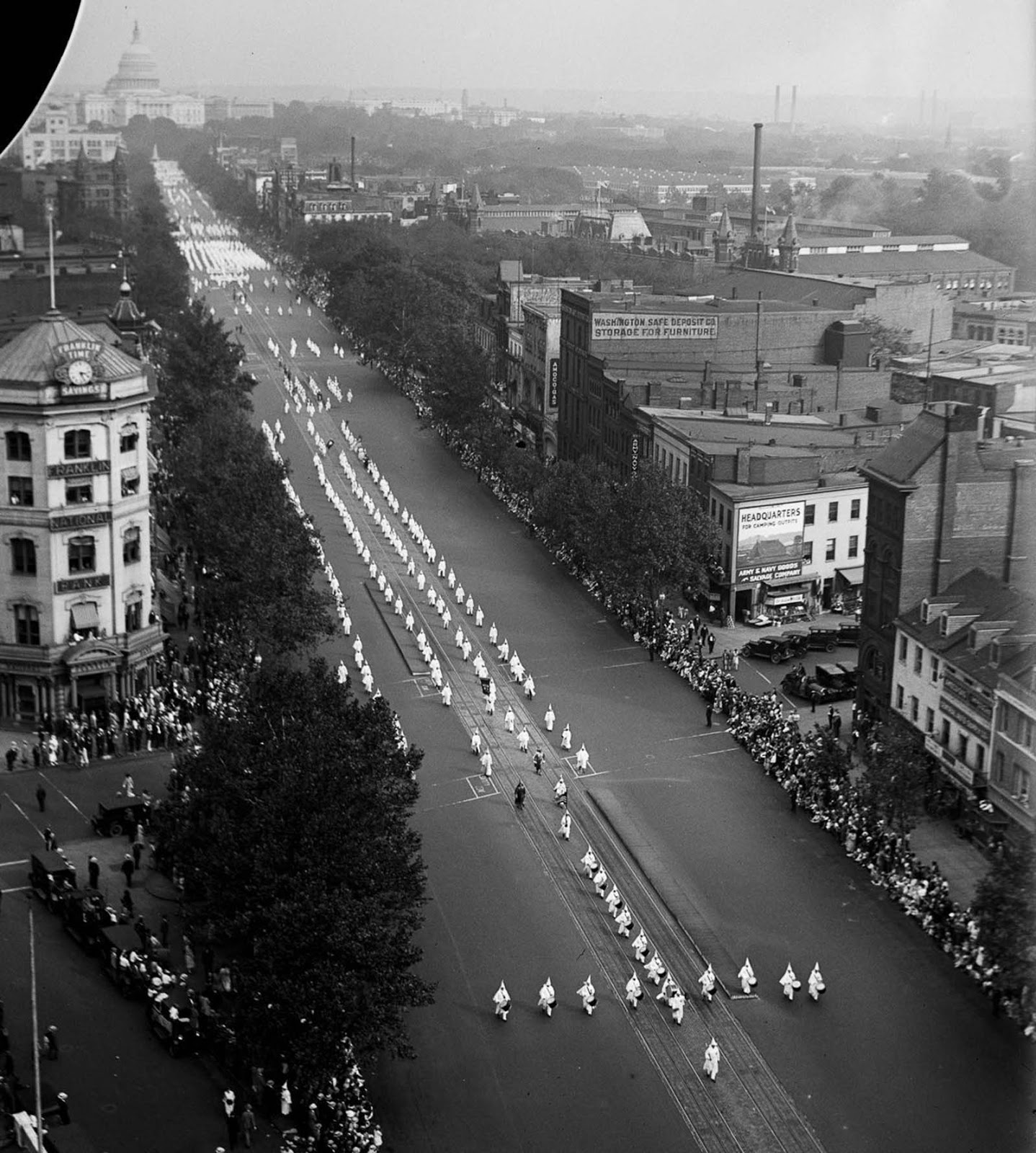
(Photo credit: Library of Congress / Text: Gonzalo Pacanins).
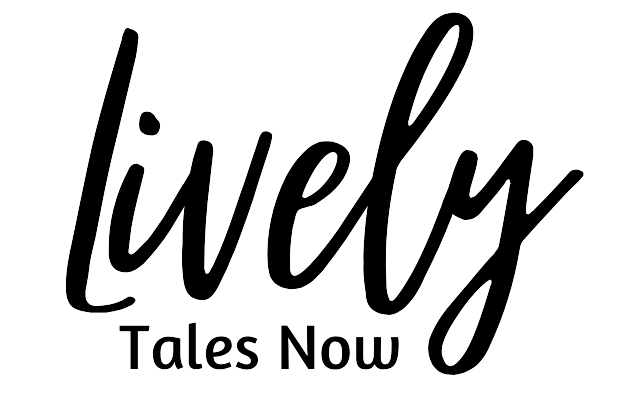

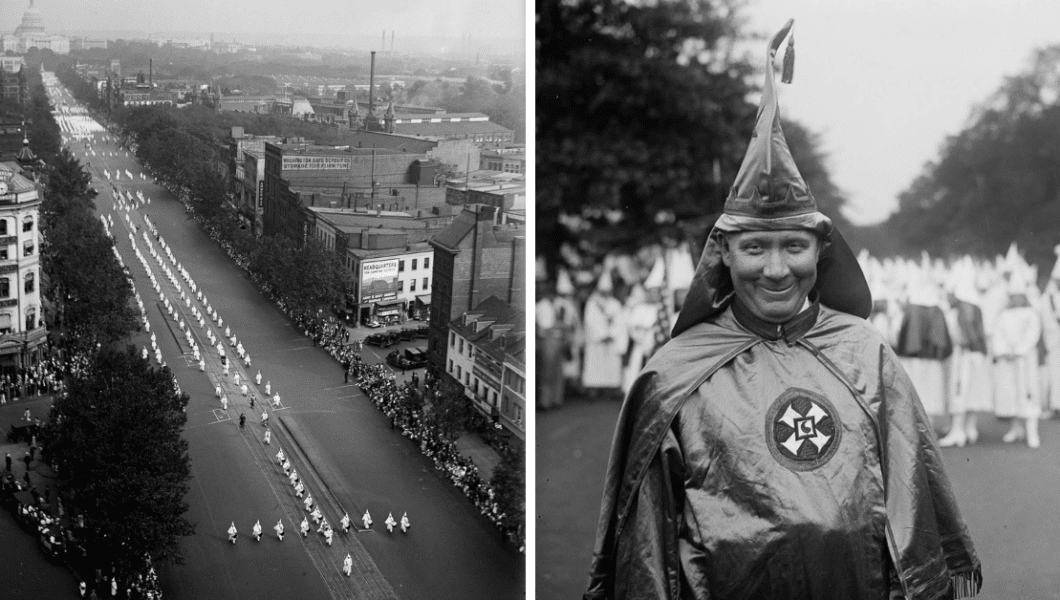
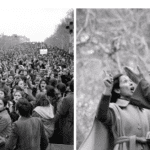
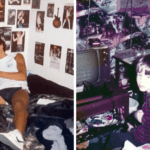
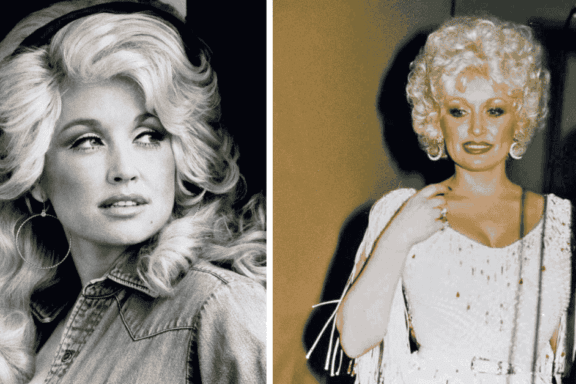
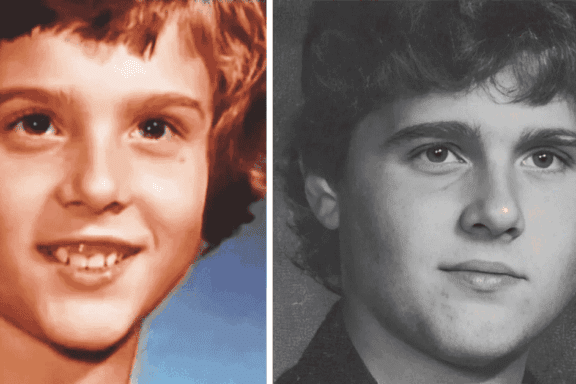
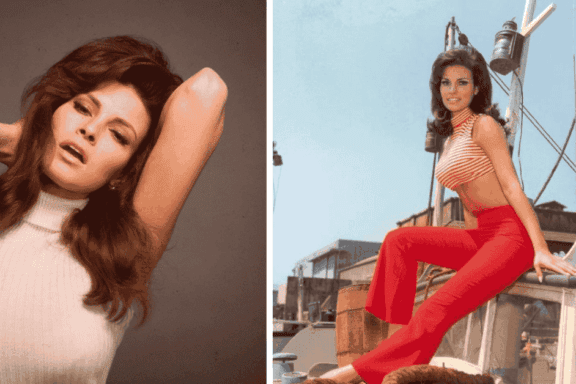
No Comments